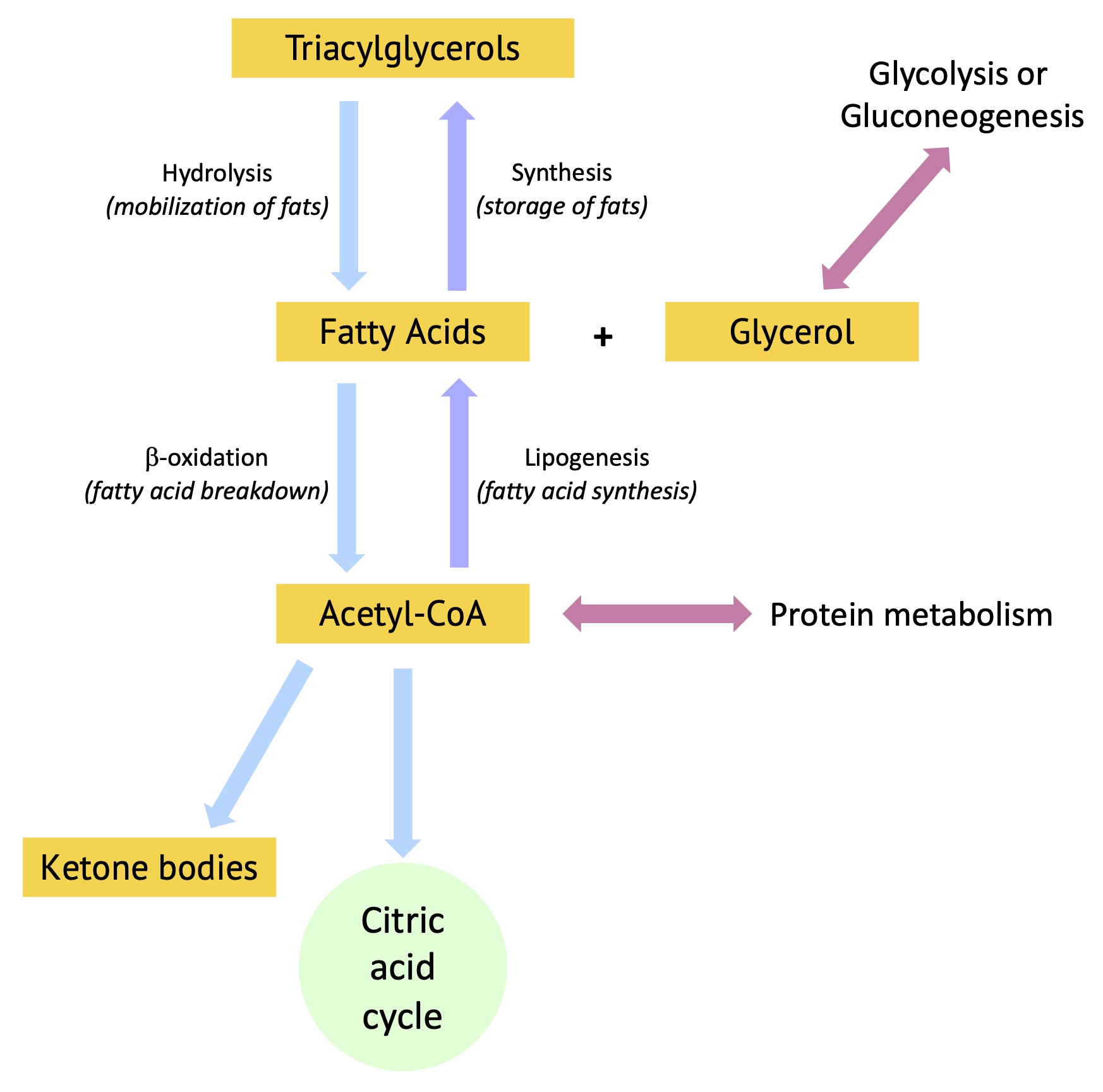24.3: Triacylglycerol Metabolism - An Overview
- Page ID
- 86365
- Identify the main metabolic pathways of triacylglycerols.
In the body, triacylglycerols are essential for long-term energy storage as well as for insulation and protection. Triacylglycerols can be ingested directly or synthesized from extra dietary protein or carbohydrates. Figure \(\PageIndex{1}\) is a summary of the metabolic pathways of triacylglycerols that will be discussed in more detail in the following sections.
Dietary Triacylglycerols
Dietary triacylglycerols are transported through the bloodstream in chylomicrons. When a chylomicron encounters the enzyme lipoprotein lipase, triacylglycerols are broken down by hydrolysis into fatty acids and glycerol. These breakdown products then pass through capillary walls to be used for energy by cells or stored in adipose tissue as fat. Liver cells combine the remaining chylomicron remnants with proteins, forming lipoproteins that transport cholesterol in the blood.
Stored Triacylglycerols
When energy is needed, lipases in adipose tissue (fat cells) are activated to hydrolyze stored triacylglycerols into fatty acids and glycerol and release them into the bloodstream. Once the fatty acids reach their destination (muscle or liver cells) they are used to generate acetyl-CoA and eventually ATP.

Glycerol from Triacylglycerols
The hydrolysis of triacylglycerols produce fatty acids, that are used for energy, and glycerol. The glycerol can be used to regenerate triacylglycerol or it can enter glycolysis or gluconeogenesis in the form dihydroxyacetone phosphate (DHAP).



